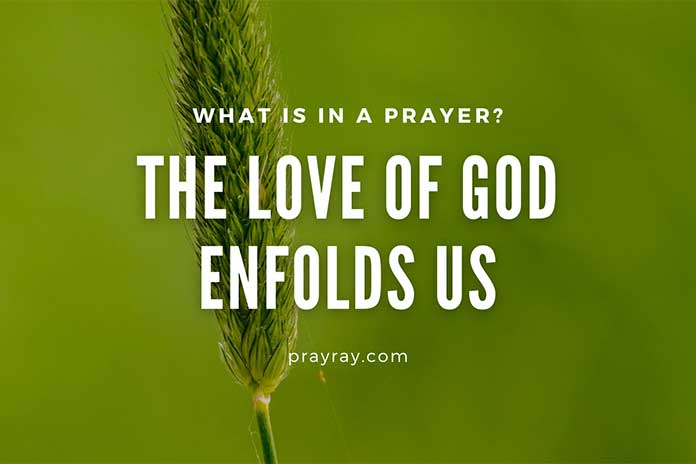Prayer, often seen as the spiritual circle of salvation for believers, is formed through a regular practice that combines unique human experience, emotions, and divine communication. But what makes up a prayer? What elements transform words and thoughts into a powerful dialogue with the Divine? Understanding the components of prayer can deepen our appreciation for this profound practice and enhance our prayer life.
The Power of Prayer
Prayer is being with God. Whether through our active actions of saying the words of prayer, meditating, or immersing ourselves in silent contemplation. What matters most in prayer is our inner attitude towards God.
Prayer is being with God
Pijus Eglinas
The power of prayer lies in how much of God’s grace we are able to receive because God gives without limit. These are the critical elements of our inner position in prayer.
Adoration and Praise
Prayer typically begins with adoration – recognizing God’s greatness and sovereignty. This element sets the tone, acknowledging God’s rightful place as the Creator and Sustainer of all. Praise allows us to marvel at God’s attributes, from His boundless love to His infinite wisdom. It mirrors the Psalmist’s words: “Great is the LORD, and most worthy of praise” (Psalm 48:1).
Confession
Confession in prayer is an honest acknowledgment of our shortcomings and sins. It is a moment of humility when we acknowledge our need for God’s grace and forgiveness. 1 John 1:9 underscores this: “If we confess our sins, He is faithful and just and will forgive us our sins and purify us from all unrighteousness.”
Confession is cathartic, cleansing, and necessary for maintaining a transparent and healthy relationship with God.
Thanksgiving
Gratitude is a crucial component of prayer. It involves expressing thanks for God’s blessings, both big and small. This can range from gratitude for life and health to appreciation for unseen blessings and lessons learned through trials. As stated in 1 Thessalonians 5:18, Thanksgiving is a reminder to “give thanks in all circumstances; for this is God’s will for you in Christ Jesus.”
Supplication and Intercession
Supplication is presenting our requests and desires to God. It’s an act of faith and trust, laying our needs before Him. Intercession extends this by including prayers for others – their needs, struggles, and blessings. This reflects the heart of empathy and love, as we are encouraged to “bear one another’s burdens” (Gal 6:2).
Listening and Silence
Often overlooked, listening is a crucial part of prayer. It involves quieting our hearts to discern God’s voice and guidance. Silence in prayer is not emptiness; it’s a receptive space for divine whispers, acknowledging that prayer is a two-way communication.
Submission and Trust
Finally, a prayer often concludes with an expression of trust and submission to God’s will. It’s surrendering our plans, hopes, and concerns to God’s omniscient care. Jesus exemplified this in the Garden of Gethsemane, praying, “Not my will, but yours be done” (Luke 22:42).
Related:
What is in a Prayer?
Prayer is more than a ritual; it’s a heartfelt conversation with God. It encompasses a spectrum of human emotions and spiritual needs, from adoration to submission. Each element plays a vital role in crafting a meaningful prayer experience. Understanding and incorporating these components makes our prayer life more prosperous, dynamic, and profoundly impactful.
Prayer is, at its heart, a sincere dialogue between the soul and the Creator, a touching of the human and divine in faith, hope, and love.











